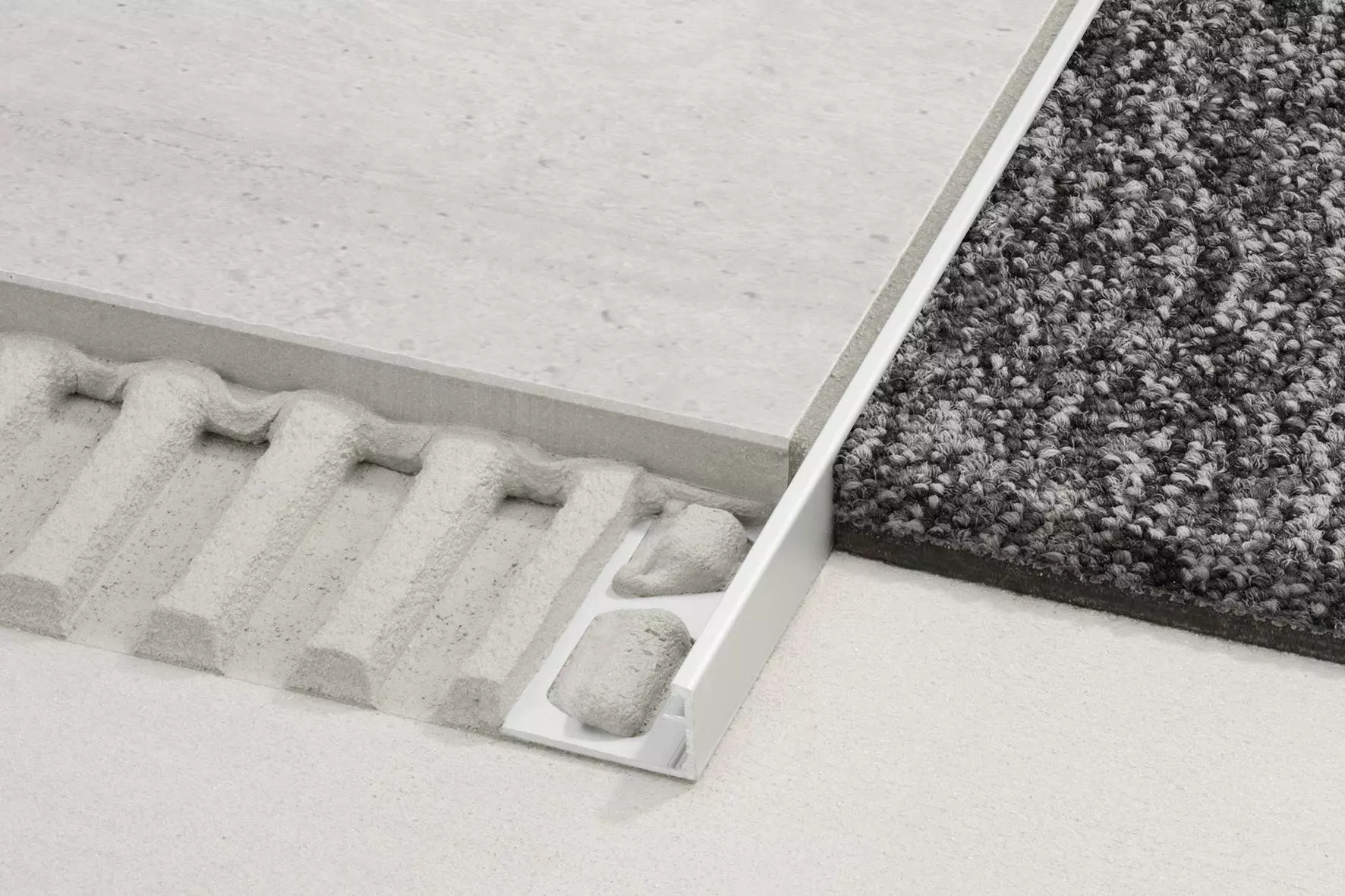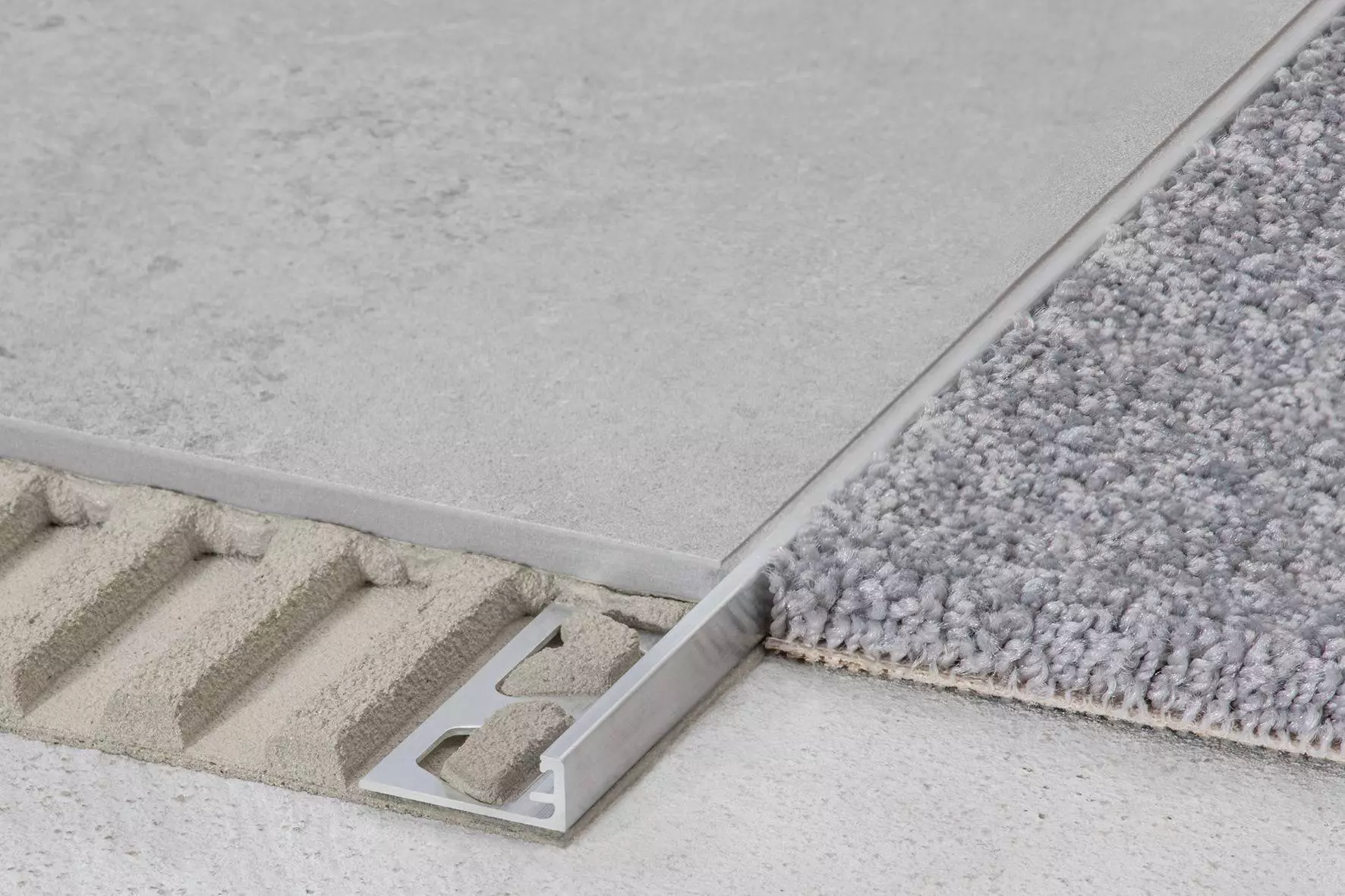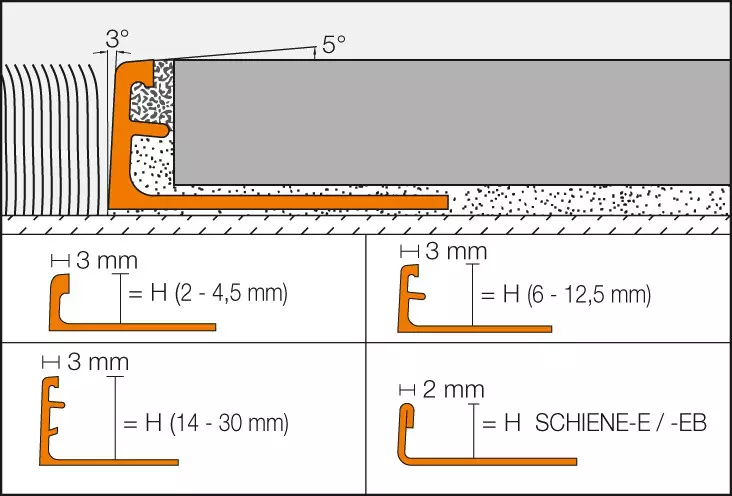The profile is available in the following finishes:
- E = stainless steel
- V2A, material no. 1.4301 = AISI 304
- V4A, material no. 1.4404 = AISI 316L
- EB = brushed stainless steel
- A = aluminium
- M = brass
- AE = anodised aluminium
Material properties and areas of application
In special cases, the suitability of materials must be verified based on the anticipated chemical, mechanical, and/or other stresses.
Schlüter-SCHIENE in versions -E (stainless steel), -EB (brushed stainless steel), -A (aluminium), -AE (anodised aluminium) and -M (brass) are suitable for installation in wall and floor areas.
Profiles for use in walls and floors
Schlüter-SCHIENE-M are profiles made of brass. Minor manufacturing flaws are unavoidable on their untreated surfaces. They are suitable for absorbing high mechanical stresses, e.g. as an edge protection for movement joints in industrial floor coverings with conveyor traffic. Brass is resistant to virtually all chemicals used in conjunction with tile coverings.
Brass that is exposed to air will oxidise, resulting in a natural patina. Exposure to moisture or aggressive substances may result in heavy oxidation and staining at the surface.
Schlüter-SCHIENE-A are profiles made of aluminium. Technically, these are so-called semi-finished products, in which minor manufacturing traces also cannot be avoided. The suitability of the profiles should be reviewed based on the anticipated chemical stresses. Aluminium is sensitive to alkaline media. Cementitious materials, in conjunction with moisture, become alkaline. Since aluminium is sensitive to alkaline substances, exposure to the alkali (depending on the concentration and time of exposure) may result in corrosion (aluminium hydroxide formation). For this reason, remove mortar or grouting material immediately from all visible areas and do not cover freshly installed coverings until the adhesive and grout have dried. Solidly embed the profile in the setting material to prevent alkaline water from accumulating in small cavities.
In case of more demanding visual requirements, SCHIENE-AE or -EB with post-treated, high-quality finishes are available.
Schlüter-SCHIENE-AE, made of anodised aluminium, has an anodised surface finish that will not change under normal circumstances. The finish may be damaged by aggressive substances or abrasive stresses. The surface, however, is susceptible to scratching and wear and may be damaged by tile adhesive, mortar, or grouting material. Therefore, setting materials must be removed immediately. Otherwise, the description regarding aluminium applies.
Schlüter-SCHIENE-E is made of roll formed V2A (material no. 1.4301) or V4A (material no. 1.4404) stainless steel. The profile structure therefore varies slightly from the extruded brass and aluminium versions. SCHIENE-E is highly durable and especially suited for application areas that must be resistant to chemicals and acids, such as the food industry, breweries, dairies, industrial kitchens, and hospitals as well as private residences.
Depending on the anticipated chemical stresses, customers can choose between the alloy materials 1.4301 (V2A) or 1.4404 (V4A). The use of V4A is recommended if consistent exposure is expected, for example in the case of swimming pools (fresh water). Even stainless steel of quality 1.4404 is not resistant to all chemical stresses. Substances such as hydrochloric or hydrofluoric acid or certain chloride and brine concentrations may cause damage. In certain cases, this also applies to seawater pools. Special anticipated stresses should therefore always be verified in advance.





